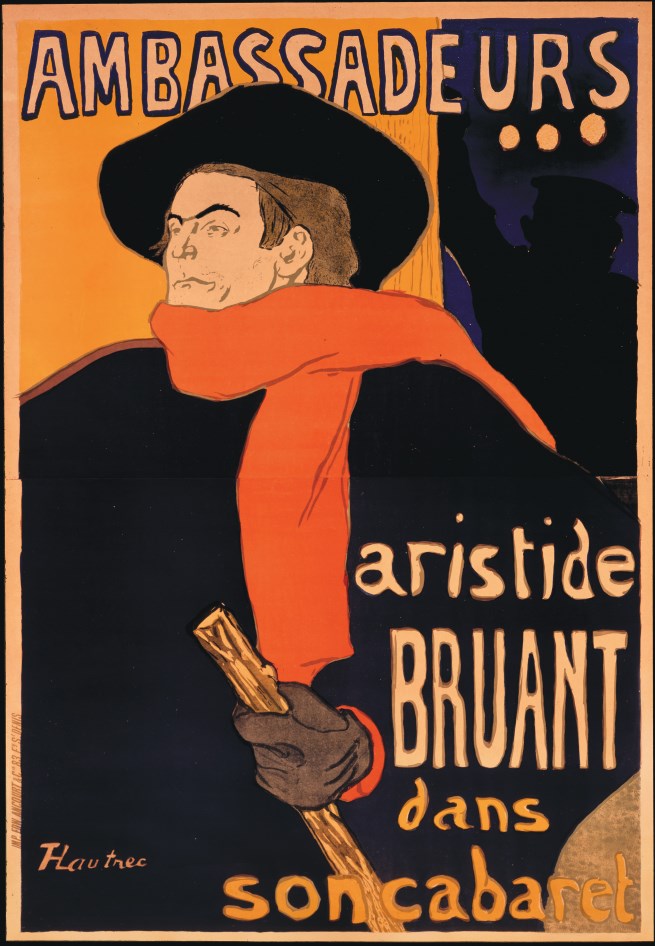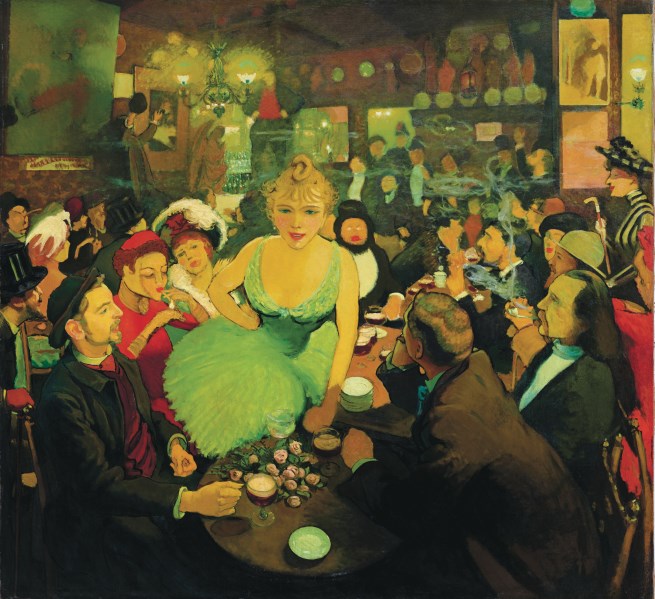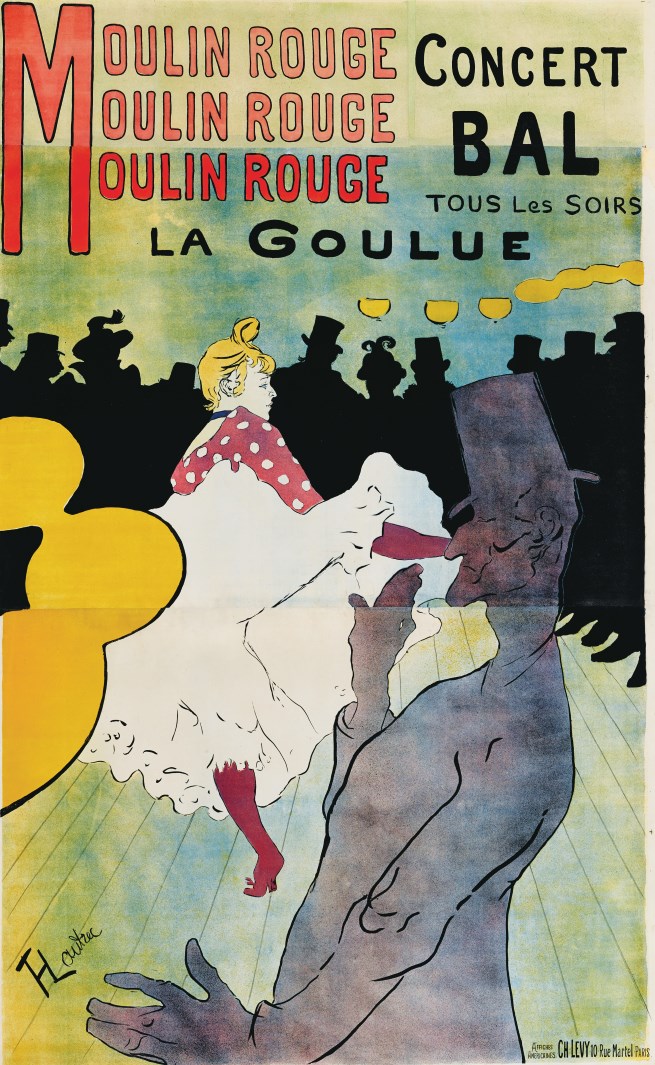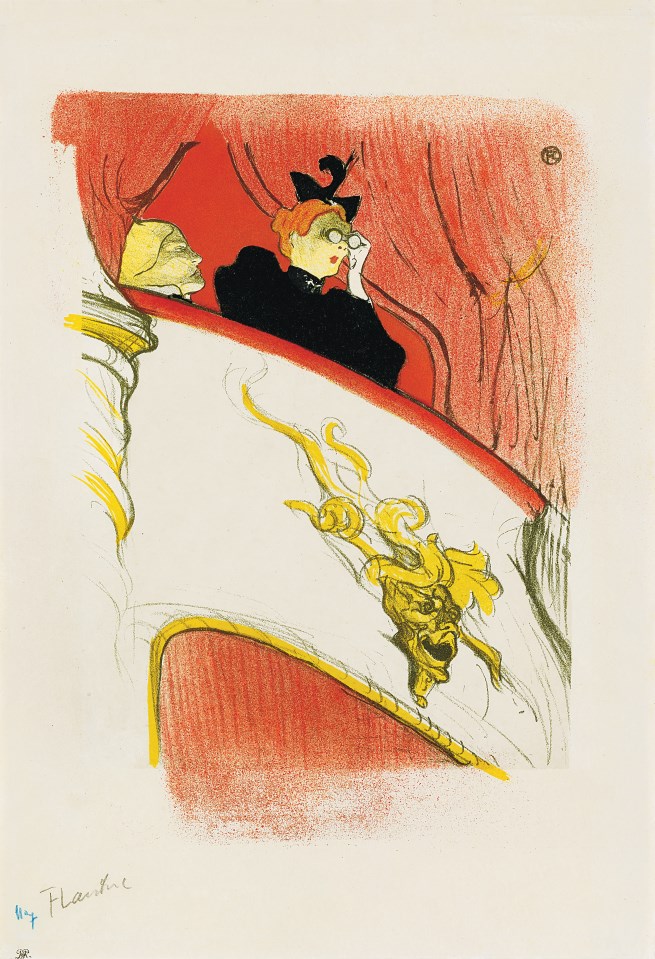Toulouse-Lautrec Illustrates the Belle Époque: Washington DC

In a special exhibition opening on February 4, The Phillips Collection in Washington presents an extraordinary selection of Henri de Toulouse-Lautrec’s iconic and rare printed works from nearly the entire period of his lithographic career (1891–1899). Toulouse-Lautrec Illustrates the Belle Époque assembles, for the first time in the United States, close to 100 defining images of late-19th-century Montmartre, drawn from one of the leading collections of prints and posters by Toulouse-Lautrec.

Louis Anquetin, Inside Bruant’s Mirliton, 1886–87. Oil on canvas, 57
1⁄16 × 61 13⁄16 in. Private collection
The son of a wealthy noble family from Albi, France, Henri de Toulouse-Lautrec (1864–1901) is best known for capturing the heart of Parisian nightlife in dynamic cabaret and dance hall scenes inspired by the city’s burgeoning entertainment district. After training with academic painters in Paris, he established a studio in bohemian Montmartre and was regularly seen at lively hot spots like the Chat Noir, the Mirliton, and the Moulin Rouge. His impressions of these local amusements fashioned a portrait of modern life. Included in the special exhibition at the Phillips is Toulouse-Lautrec’s first lithograph, the poster Moulin Rouge La Goulue (1891), which made him an overnight success. Produced in some 3,000 impressions, the poster’s massive scale, fragmented forms, compressed pictorial space, and range of colors broke new ground. By presenting this significant work alongside a unique trial proof in black and white, the exhibition provides a glimpse into the artist’s highly involved printmaking process.

Henri de Toulouse-Lautrec, Moulin Rouge, La Goulue, 1891. Brush and
spatter lithograph, printed in four colors. Key stone printed in
black, color stones in yellow, red, and blue on three sheets of wove
paper, 75 3⁄16 × 46 1⁄6 in. Private collection
The exhibition also includes additional works by Toulouse-Lautrec’s contemporaries, such as Théophile Alexandre Steinlen’s famous poster Tournée du Chat Noir (1896) and Louis Anquetin’s never-before-exhibited painting Inside Bruant’s Mirliton (1886–1887). Once considered lost, with only preliminary drawings as evidence of its existence, Anquetin’s large format painting invites viewers inside Aristide Bruant’s lively cabaret Mirliton.

Henri de Toulouse-Lautrec, The Box with the Gilded Mask, about 1894. Crayon, brush, and spatter lithograph with scraper, printed in five colors. Key stone printed in olive green, color stones in red or brown-red, yellow, gray- beige, and black-olive green or black on imitation Japan paper. Only state, 14 5⁄8 × 12 7⁄8 in. Private collection
The Phillips Collection
1600 21st St., NW
Washington, DC 20009
February 4 – April 30, 2017
www.phillipscollection.org
Share to: Facebook Twitter LinkedIn Email
By Phil Tremo
Leave a reply
Your email address will not be published. Required fields are marked *




REPLY